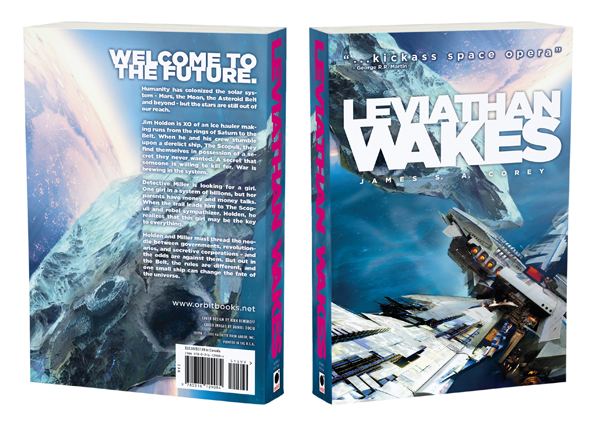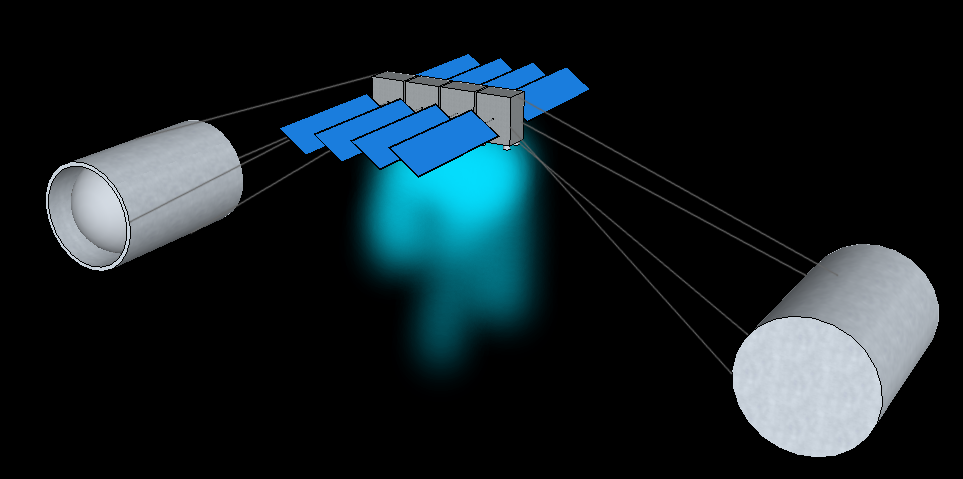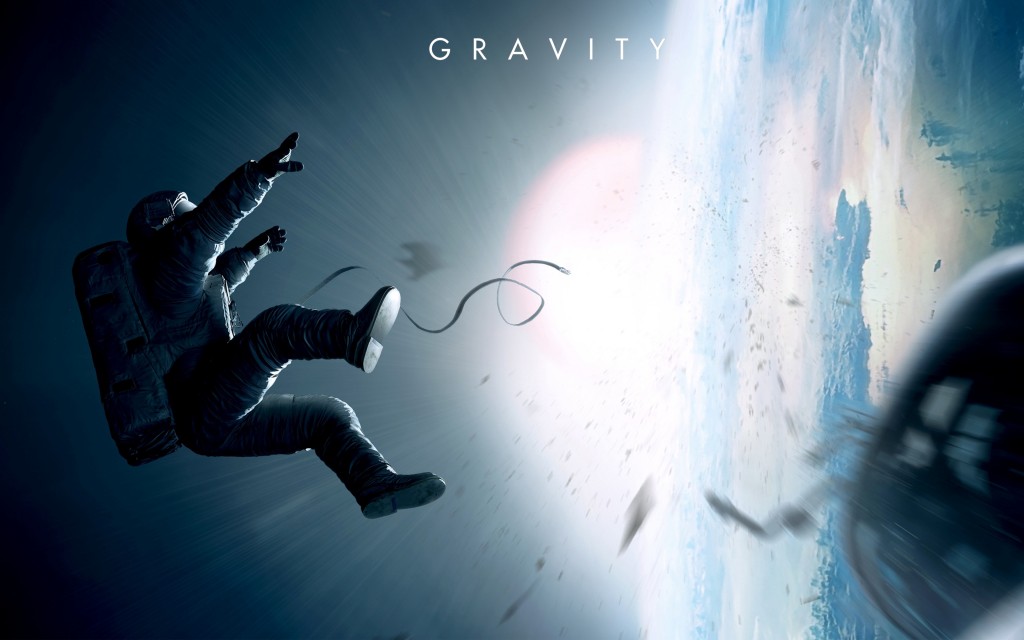I have been enjoying “The Expanse” series by James Corey. It’s a space opera set a couple hundred years from now, after humans have colonized and populated the moon, Mars, the asteroid belt, and outer planet moons. Spaceships journey between these worlds, complex engineering projects remake asteroids into habitable stations, and space navies boost from place to place to fight space pirates. I think it’s great because it captures what I wish for humanity’s future: that we will go out and colonize other worlds, that we will be able to undertake engineering projects for the greater good, and that we will become robust enough to weather grand challenges – things we see in the world today as global warming, income inequality, nuclear proliferation, and the like. In many ways, the first three books are about the tension between such grand visions and idealism, and politics and profiteering.

The books are soon going to be a TV series, and I am very much looking forward to see its depiction of space and space travel. (With the exception of parts of the first book, wherein Corey tried to write something horror-ish by being as gross as he could think to be. Whatever. Those are not the good parts of the book.) Corey steered clear of many sci-fi tropes that would have a big impact on the appearance of the series – no artificial gravity here! – and he made sure to build aspects of spacecraft engineering and operations into the cultures he depicted. For example, “Belters” nod and shrug with whole-arm gestures, so that they can be seen when wearing a suit. A good chunk of the books take place in zero gravity. Hopefully that will translate to the screen!
I’m going to take a look at some of the spacecraft engineering concepts in “The Expanse.” Let’s start with the most science-fictional, and therefore least plausible:
The Epstein Drive
Corey very quickly establishes that the powerhouse of his whole solar-system-wide civilization is the “Epstein Drive,” which is some kind of fusion engine for boosting spaceships around. It allows craft to thrust continuously from one planet or asteroid to another, accelerating constantly for half the trip and then decelerating constantly for the second half. This trajectory allows relatively quick travel times between worlds. Conveniently for crew health, and for TV production, the engine also provides “thrust gravity” inside the spaceship. Ships are therefore designed with decks in “stacks” above the engine with a ladder or lift giving crew access between decks, like in a skyscraper.
A fusion engine isn’t a crazy idea, especially not for a civilization a couple hundred years in the future. The problem is propellant. No matter how powerful or efficient your engine is, you will always need to be chucking propellant out the back to sustain this kind of thrust profile.
Picture this: you’re sitting in the middle of a frozen pond. The ice is perfectly frictionless, so you can’t walk or crawl or anything to get back to solid ground. What you do have is a bag full of baseballs. If you throw a baseball away from you, then you have given it some amount of momentum (mass times velocity). Your body gets an equal and opposite amount of momentum: you start sliding in the direction opposite your throw, but much more slowly than the baseball (because its mass is small while yours is big). Great! You have a way to get to shore. But you don’t want to wait out this long slide, so you throw another baseball. This speeds you up a little. Another throw speeds you up a little more. You can keep throwing baseballs until you decide that you’re going fast enough that you can wait it out. That’s basically how spacecraft work now: they thrust for a little, and then coast for a long period of time until they get to their next destination. But what if you wanted to keep thrusting the whole time? You will need more baseballs. Lots more baseballs. You are going to have to keep throwing them, constantly, to keep accelerating yourself.
Writing that a spaceship has a fusion drive instead of a chemical rocket is like replacing yourself in this analogy with a major league baseball pitcher. They will put more momentum into each pitch, and so they’ll go faster across the ice. In other words, their thrust is more efficient. But they will still run out of baseballs at some point, and then they must coast without thrust. The spaceship must stop its burn, cease thrust gravity, and wait several more months before getting to their destination. In the end, high thrust – and, with it, appreciable thrust gravity – should only be active for a short time in any space voyage through the Expanse. As we are learning with ion propulsion nowadays, it can often be most efficient to run at a low level of thrust, but sustain that for a very long time. But that doesn’t give our characters a convenient floor to stand on! So Corey put the word “Epstein” in front of “fusion drive.” “Epstein,” in this case, is short for “magic.” It’s a kind of magic that lets Corey have thrust without propellant, so that he can simultaneously achieve short (astronomically speaking) travel times and keep his crew in thrust gravity.
For a more physically realistic depiction of relationship between fuel, propellant, and thrust, consider Neal Stevenson’s spaceship Ymir in Seveneves.
The Way Ships Move
In the Expanse universe, spaceships are flipping around all the time to vector their engines in the correct direction to change their velocity. And we often read references to what the thrusters are doing on ships. This is all good. But the ships don’t really move the way real spacecraft move.
First of all, orbits barely enter the picture. One scene in Leviathan Wakes involves a character plotting out the likely trajectories of a certain ship, but other than that, the characters can go just about anywhere they want to go as long as they have a good ship to call theirs. Absent the Epstein “magic,” that behavior isn’t really plausible.
Second, though, is that Corey imagines his spaceships rotate themselves around in the same way just about all science fiction authors do: with thrusters. That’s not what most modern spacecraft do! They actually use wheels. Spin a wheel clockwise, and Newton’s third law kicks in: there’s an equal and opposite reaction. The spacecraft spins counterclockwise. Devices that function as I just described are, therefore, called reaction wheels. Other wheel-based devices that take advantage of gyroscopic torques can give satellites quite a lot of agility – without using any propellant. I suspect that the reason why these realistic actuators don’t often appear in science fiction is that there are no obvious cues to their operation: no thruster spurts, no blue glows shining out of emitters, nothing. The ship just starts to rotate.
I was happy to read that Corey’s spaceships are all native to space. There are not many cases where a ship lands, and in those cases, it’s always a small one. The heroes’ ship does once, on Ganymede. With surface gravity comparable to Earth’s moon, that’s not such a stretch for a fusion-drive starship.
28 June 15 Edit: Darn it, I just started Cibola Burn and about the fourth thing that happens is that the Rocinante lands on an Earth-size planet and immediately takes off again. Minus points for that!
The Battles
Space combat plays a big role in the plot of the Expanse books. And it’s a generally great depiction of space combat! Lots of the tactics and technologies are grounded in plausible physics. Ships shoot missiles and guns at each other, the effective range of a torpedo is determined by how close your ship needs to be to make sure the enemy ship doesn’t have time to shoot your torpedo down, the crew all gets into space suits at the beginning of the battle, there’s a ton of electronic warfare activity, and the battles wax and wane in intensity as the spaceships maneuver and orbit.
I’ve long thought that the most effective weapons in a space battle would be simple kinetic slugs or flak shells. My reasoning is simple: the speeds of objects in space are fast enough that a relatively small piece of junk can easily blast a hole through sensitive components. This is exactly why present-day spacecraft engineers – like me – worry about micrometeoroid strikes, space debris, and the Kessler syndrome. In the Expanse, the ships all fire torpedoes or guns at each other. And the results of weapon strikes are devastating: it only takes one torpedo or a few well-placed railgun slugs to take out a ship. Ships blast electronic garble at each other to screw up their targeting systems, but in the end the best defense is not getting hit – so we see the pilot do a lot of evasive maneuvering. I think this is all on the right track from a physics standpoint, though a real space battle with “Expanse-style” ships would probably take a lot longer, involve more orbit dynamics, and require a lot more computerized coordination.
There are two rather implausible elements to the battles. First is the Epstein Drive, which makes the combatants’ maneuvering matter a lot more than orbit dynamics. Second is the “juice,” a drug cocktail that keeps people alive and functioning when exposed to high gee forces. As a way to deal with high gees, the “juice” is just about as good a science-fictiony way to do it as any other, including immersing people in fluid as in The Forever War or inventing some kind of mythological inertial dampener. In the end, though, humans are squishy, precious cargo, and fighting full-on battles with them inside your spaceships doesn’t make a whole lot of sense.
Stealthy Spaceships
(There are some minor spoilers in this section!)
A plot point early on in the first book, Leviathan Wakes, revolves around the appearance of a stealth spaceship. This doesn’t involve any cloaking devices like in the Star Trek universe. Rather, a few spaceships avoid detection by (1) being painted black, which hides them in the visible spectrum, (2) having surfaces that absorb or scatter radar, which hides them in radio wavelengths, and (3) radiating heat out the side of the ship facing away from the enemy, which hides them in infrared. Much as it might give some people heartburn, this is all fairly plausible! The first two points are easy to imagine based on what we know about about the present-day Air Force. Though its not as familiar to the general public, the third item is actually something that comes up all the time in spacecraft design: especially if your satellite has sensitive electronics – like an infrared telescope – the design will include coolers, heaters, baffles, insulation, and radiators designed to emit heat in directions pointing both away from the precious detectors and away from the sun. Even the International Space Station has radiators that rotate to keep them pointing away from the sun most of the time. (The reason is that if the radiators face the sun, they’ll start to absorb heat into the station instead of emitting it out!) Such a “thermal management system” could be designed to, with the other stealth elements, give one side of a spacecraft the appearance of a cool, black spot indistinguishable from the rest of empty space.
A stealth spaceship wouldn’t be easy to build, and it wouldn’t be perfectly invisible – just harder to detect than normal to a lone adversary. And, in fact, both those points are relevant to the spaceships in the Expanse. One crewmember is able to spot a stealth ship on his sensors, but he doesn’t know what it is or how to respond to it. And that’s really all it takes for the stealth ship to accomplish its mission, after all! The very difficulty of constructing a stealth spacecraft actually makes the stealthiness more effective. The characters who cannot conceive that somebody could field a stealth spaceship end up more prone to falling prey to it.
Spaceship stealth makes an appearance other times, as well. At least twice in the series, the heroes’ ship hides itself by masquerading as something it’s not.
Spin Gravity
Lots of space stations in the Expanse, including some embedded in asteroids, spin to provide their inhabitants with centrifugal “gravity.” This is an idea that’s been around the aerospace and science fiction communities for decades, and Corey executes it well. In fact, one of the things I enjoy about the books is how the plot moves between the different environments of planetary gravity, low lunar gravity, spin gravity, and (“Epstein”-based though it may be) thrust gravity. The different gravitational environments contribute to different cultures, and they put the characters in interesting and different situations. If the TV series sticks to the books, we’re going to see low-gee gunfights and damage control teams solving problems in microgravity. Regularly.
All the stations with spin gravity are large, which is the right choice. It means they don’t have to spin at a dizzying rate to get a comfortable level of gs for their inhabitants. There is another benefit, in that the weird non-intuitive kinematics of rotations – Coriolis forces – have less of an effect the larger the rotating space station. These effects can be truly weird, and it can be hard even for physicists to bookkeep all the terms correctly to model them. Something that might happen if you were standing in a spinning space station is that if you drop something, you will actually see it follow a curving path to the floor, and it won’t land at your feet. You will also see it fall at a different speed than you would expect based on the gravity you experience. (I’m planning to write something up separately to go into all the details.)
Anyway, suffice it to say that spin gravity is a strange environment and Corey, like most science fiction writers, doesn’t go into all the details. But spin is the right idea for giving gravity to spacefarers, and I can’t wait to see how the visual effects team on the Expanse interprets all the spinning structures.
All in all, I’m thinking that The Expanse will be good for science fiction on TV. It will be a show with a time period a bit closer to us than, say, Star Trek. And the show will have a wide diversity of environments to challenge the characters. I am looking forward to seeing their depictions of spacecraft and how they move around in space!










